Bird Nest Fern (Single Plant)
Original price was: ₹500.₹269Current price is: ₹269.
2 in stock
Description
Quantity- Single Plant (overall minimum diameter is 15 cms)
Bird’s-Nest Fern/ Asplenium Nidus
bird’s-nest fern is a commonly used houseplant. they have large fronds similar to banana leaves which are flat, long, wavy or crinkly. the center of the plant resembles a bird’s nest. they are light green in color with a black midrib. the plants found in wild are epiphytes in the sense that they grow upon other plants. wild ones have fronds up to 5 feet long, however the ones kept as houseplants have fronds that typically grow only about 2 feet long. they do not bloom. bird’s-nest fern are native to tropical southeastern asia, east tropical africa, india, hawaii. they are evergreen with undivided fronds. they are best planted in the spring. asplenium requires adequate warmth, humidity and moisture. when grown as a house plant, it is best to keep them near a shower in a bathroom where they will receive ample warmth and humidity.
birds nest fern grows well in low sunlight to a moderate amount of shade. keep them away from direct sunlight other than the early morning sun. extreme light may burn the leaves. they thrive well in temperatures between 60 and 80 degrees. it can tolerate temperature up to 50 degrees, but anything less than can harm the plant. birds nest fern can be kept in north facing windows where they will utilize the light and cooler temperatures these places receive. care should be taken to keep them away from direct air-conditioning.
these plants prefer loose soil that are rich in organic matter with excellent drainage. peat or coir based potting mixtures can be used. the fern do not stand well in soggy soil, hence water the plants only when the top soil is dry. in order to prevent mold formation, avoid watering directly to the center and also keep water away from the fronds.
fertilize the fern once a month with a balanced liquid fertilizer. keep the fertilizer away from the fronds as it can burn the foliage. fertilize the plant only during the active growing season lest the fronds may become yellowish or take abnormal shape.
new leaves that emerge from the center should be handled with care as they are extremely fragile and have high chance of becoming damaged and deformed. propagating the plant is quite tricky. repotting can be done in a container large enough to keep the plant stable. clay pots are better over plastic to anchor the plant. spring is the best time for repotting. birds nest fern is an ideal plant for home terrarium and garden. they are particularly suited for bathroom and kitchen.
what makes it special:
- low maintenance and easy to care.
- use in feng shui
- help with allergies
- tolerate low-light conditions
- filter odors
plant specifications:
- plant height :Â 7 – 9 inch(17 – 22 cm)
- plant spread : 6 – 8 inch(15-20 cm)
- common name : birds nest fern, nest fern
- maximum reachable height : up to 120 centimeters
- flower color : none
- bloom time : none
- difficulty level : easy
planting and care:
- sunlight : filtered sunlight to a moderate amount of shade is ideal for birds nest fern.
- soil : loose loamy soil rich in organic matter, well drained.
- watering : water the plants only when the top inch of soil dries out. water every 1-2 weeks, watering more often in bright light and less often in lower light. water around the plants and never directly into the center. do not overwater the plant.
- application of fertilizer : before adding fertilizer rake the topsoil without disturbing the roots. fertilize using balanced liquid fertilizer that is reduced to half strength(20-10-20), once a month. fertilize the plants only during the active growing season, that is during spring and summer. over fertilizing can lead to pests and diseases.
- plant protection : remove any dead or damaged fronds. in case of pests, dilute some neem oil and lightly mist the fronds. slugs should be picked off and disposed.
don’tsÂ
- keep them away from direct sunlight.
- do not use soggy soil.
- do not over water the plants.
- protect the plant from direct exposure to air blowing from an ac vent.
initial care for 1-2 weeks after receiving plant at your location: keep the plant in natural sunlight, under shade.
poke the top soil using finger to check dampness. add 1 cup of water when the top soil becomes dry. do not repot for atleast a week after receiving the order.
key requirements to keep the plant healthy:
- sunlight :Â filtered sunlight to moderate amount of shade.
- watering :Â water the plants only when the top inch of soil dries out.
- temperature : 60 – 80 degree celsius.
- soil :Â loose loamy and well drained soil rich in organic matter.
birds nest fern special feature:Â
- evergreen with solid, undivided fronds.
- purify air and reduce the amount of harmful pollutants.
- are known to ward off negative energy.
- reduce stress.
uses:
ornamental use:
excellent indoor plant for kitchen and bathroom. looks wonderful on shelves, tables or in hanging pots.
medicinal uses:
infusion of leaves is used to ease labor pain by malaysian native tribes. the fronds can be crushed in water and used as a lotion to treat fever
Bird’s-Nest Fern/ Asplenium nidus
Description
Bird’s-nest fern is a commonly used houseplant. They have large fronds similar to banana leaves which are flat, long, wavy or crinkly. The center of the plant resembles a bird’s nest. They are light green in color with a black midrib. The plants found in wild are epiphytes in the sense that they grow upon other plants. Wild ones have fronds up to 5 feet long, however the ones kept as houseplants have fronds that typically grow only about 2 feet long. They do not bloom.
Bird’s-nest fern are native to tropical southeastern Asia, east tropical Africa, India, Hawaii. They are evergreen with undivided fronds. They are best planted in the spring. Asplenium requires adequate warmth, humidity and moisture. When grown as a house plant, it is best to keep them near a shower in a bathroom where they will receive ample warmth and humidity.
Birds nest fern grows well in low sunlight to a moderate amount of shade. Keep them away from direct sunlight other than the early morning sun. Extreme light may burn the leaves. They thrive well in temperatures between 60 and 80 degrees. It can tolerate temperature up to 50 degrees, but anything less than can harm the plant. Birds nest fern can be kept in north facing windows where they will utilize the light and cooler temperatures these places receive. Care should be taken to keep them away from direct air-conditioning.
These plants prefer loose soil that are rich in organic matter with excellent drainage. Peat or coir based potting mixtures can be used. The fern do not stand well in soggy soil, hence water the plants only when the top soil is dry. In order to prevent mold formation, avoid watering directly to the center and also keep water away from the fronds.
Fertilize the fern once a month with a balanced liquid fertilizer. Keep the fertilizer away from the fronds as it can burn the foliage. Fertilize the plant only during the active growing season lest the fronds may become yellowish or take abnormal shape.
New leaves that emerge from the center should be handled with care as they are extremely fragile and have high chance of becoming damaged and deformed. Propagating the plant is quite tricky. Repotting can be done in a container large enough to keep the plant stable. Clay pots are better over plastic to anchor the plant. Spring is the best time for repotting.
Birds nest fern is an ideal plant for home terrarium and garden. They are particularly suited for bathroom and kitchen.
What makes it special:
• Low maintenance and easy to care
• Use in Feng Shui
• Help with allergies
• Tolerate low-light conditions
• Filter odors
Plant specifications:
Plant height
7 – 9 inch(17 – 22 cm)
Plant spread
6 – 8 inch(15-20 cm)
Common name
Birds nest fern, Nest fern
Maximum reachable height
Up to 120 centimeters
Flower color
None
Bloom time
None
Difficulty level
Easy
Planting and Care:
Sunlight
• Filtered sunlight to a moderate amount of shade is ideal for birds nest fern.
Soil
• Loose loamy soil rich in organic matter, well drained.
Watering
• Water the plants only when the top inch of soil dries out.
• Water every 1-2 weeks, watering more often in bright light and less often in lower light.
• Water around the plants and never directly into the center.
• Do not overwater the plant.
Application of fertilizer
• Before adding fertilizer rake the topsoil without disturbing the roots.
• Fertilize using balanced liquid fertilizer that is reduced to half strength(20-10-20), once a month.
• Fertilize the plants only during the active growing season, that is during spring and summer.
• Over fertilizing can lead to pests and diseases.
Plant protection
• Remove any dead or damaged fronds.
• In case of pests, dilute some neem oil and lightly mist the fronds.
• Slugs should be picked off and disposed.
Don’ts
• Keep them away from direct sunlight.
• Do not use soggy soil.
• Do not over water the plants.
• Protect the plant from direct exposure to air blowing from an Ac vent.
Initial care for 1-2 weeks after receiving plant at your location:
• Keep the plant in natural sunlight, under shade.
• Poke the top soil using finger to check dampness.
• Add 1 cup of water when the top soil becomes dry.
• Do not repot for atleast a week after receiving the order.
Key requirements to keep the plant healthy:
Sunlight
Filtered sunlight to moderate amount of shade.
Watering
Water the plants only when the top inch of soil dries out.
Temperature
60 – 80 degree celsius.
Soil
Loose loamy and well drained soil rich in organic matter.
Birds nest fern special feature:
Evergreen with solid, undivided fronds.
Purify air and reduce the amount of harmful pollutants.
Are known to ward off negative energy.
Reduce stress.
Uses:
Ornamental use:
Excellent indoor plant for kitchen and bathroom.
Looks wonderful on shelves, tables or in hanging pots.
Medicinal uses:
Infusion of leaves is used to ease labor pain by Malaysian native tribes.
The fronds can be crushed in water and used as a lotion to treat fever.
1 review for Bird Nest Fern (Single Plant)
Only logged in customers who have purchased this product may leave a review.

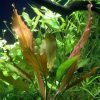
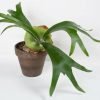
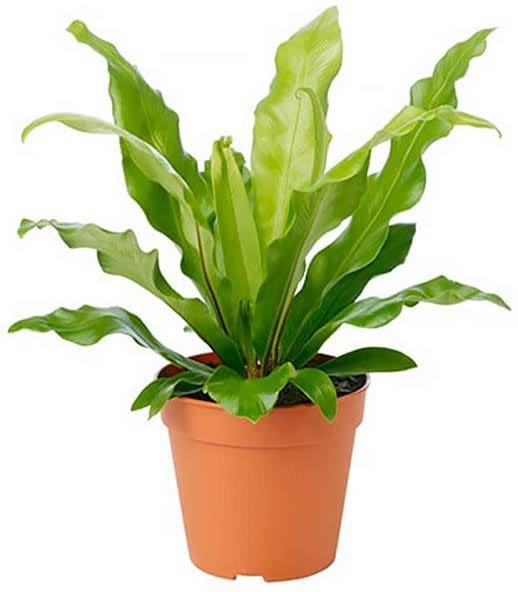
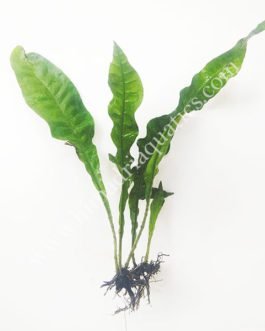

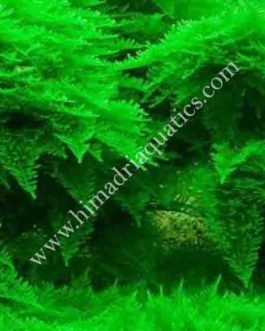
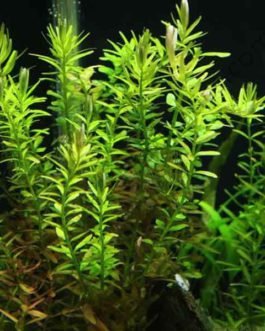
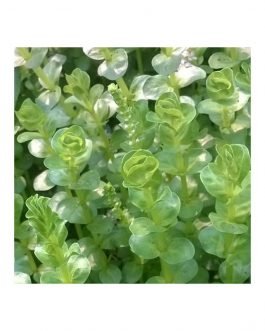
anoopcnet (verified owner) –
Small plant 5-6 inches height but very healthy and good plant.